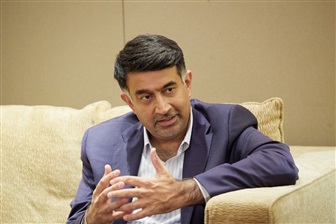ams OSRAM recently conducted its annual media briefing in Taiwan, showcasing progress in its sensor and lighting technology portfolio over the past year. The company's automotive electronics segment now constitutes more than half of its revenue, with expectations for this proportion to increase further in the coming years.
Digital camera brands are rebounding in 2025, releasing several new products equipped with AI, deep learning, and other functions that better align with current user needs. With the rise of retro trends, the boom of social media, and the fact that smartphones still cannot fully replace mid- to high-end cameras, digital cameras have made a comeback.
Gemtek Technology aims to significantly expand shipments to India with new investments in optical communications and AI system-on-module sectors. The networking company plans a 100-fold increase by early 2026, contingent on national certification of its Wi-Fi over mmWave Technology (WoMT) in India.
Wiwynn chairwoman Emily Hong outlined three key advantages and three major challenges of emerging fintech like stablecoins during the Monte Jade Science and Technology Forum on December 11. She noted that Wiwynn's finance department was instructed to research cryptocurrencies two to three years ago. While it has yet to implement a system, its attitude toward adopting stablecoins or virtual assets as a publicly listed company is conservative but open, emphasizing that "trust is the foundation of everything."
Taiwanese integrated circuit (IC) distributor Weikeng projects robust revenue growth driven by rising demand for AI data center computing and power management solutions, with AI server-related products expected to increase by 50 to 60% in 2026. The company also identifies emerging sectors such as AI glasses and robotics as key long-term growth areas, despite uncertainties in broader memory market dynamics.
AI data centers are seeing rapidly increasing demand for HPC and big data processing. The shift from traditional copper wiring to fiber optics boosts data transfer rates while lowering power consumption. Gallium arsenide (GaAs) epitaxy maker Visual Photonics Epitaxy Co. (VPEC) stated that while the smartphone market in 2026 is expected to remain flat or show slight growth, rising transmission efficiency requirements in AI data centers will drive planned equipment purchases and expanded capacity, making data centers the company's main growth driver for 2026.
As AI compute hubs expand rapidly, data center power demand is rising fast. AI servers are being redesigned across cooling, power and resilience, especially in HVDC, modular power systems and backup architectures.
Amid the global AI surge, Lens Technology acquired PMG International to gain a 95.1% stake in Yuans Technology, an Nvidia-certified supplier specializing in liquid cooling and server racks. This strategic move enhances Lens's capabilities in AI server hardware, complementing its consumer electronics expertise.
Foxconn signed a development agreement with the Kaohsiung city government on December 12 to advance the Y15 mixed-use project along the city's MRT Yellow Line. The company will invest NT$15.9 billion (US$509 million) to build a new flagship headquarters in the Asia New Bay Area as it deepens its long-term commitments in southern Taiwan.
Joinsoon Electronics Manufacturing, a manufacturer specializing in connectors and cable assemblies, reported progress in transforming its business model, driven by demand in AI servers and advancements in high-speed transmission standards. These factors are expected to be key growth contributors by 2026.
J&B International has initiated operations at its new Vietnam factory, shifting the site from Binh Phuoc to Dong Nai Province. CEO Clive Hsiao said the land purchase and plant design are complete, with environmental reviews underway. Construction is expected to start soon, targeting completion by end-2026 and trial production in first quarter 2027.
More coverage



